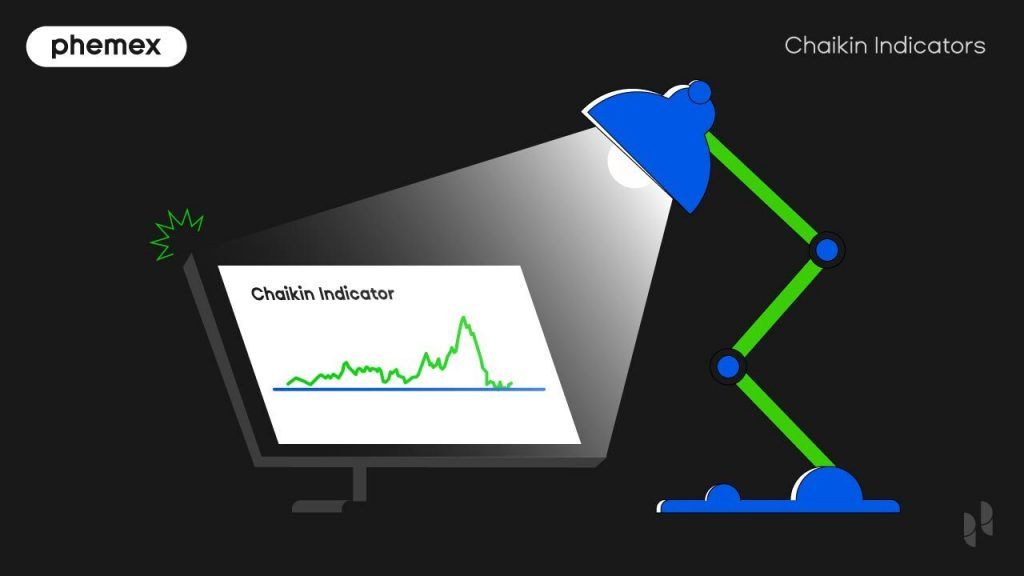Summary:
- The Volume Oscillator is a technical indicator that shows the difference between two moving averages of a coin’s/stock’s volume expressed as a percentage.
- The premise of the VO is that it is not the actual level of volume, but the change in volume relative to the recent past that is a more meaningful metric to look at.
- A positive value i.e. above the zero line implies that market support may be enough to sustain the price action in the direction of the current trend. Meanwhile, a negative value i.e. below the zero line hints at a lack of support in the market, which may lead to prices just ranging sideways or reversing.

When the price of a crypto keeps going up, beginner traders should be wary. This is because if the trade volume is low, it may not be a real uptrend. Veteran traders know that when trade volume is low, yet the price keeps going up, there will likely be a trend reversal. This is because without strong volume, a market move is not valid. To verify a trend reversal, analysts must first know whether the price movement and volume momentum agree with each other.
And yet, merely analyzing the actual level of volume may not be enough to make an informed trading decision.
Here in this article, we will introduce one of the most common volume oscillators in crypto trading–the volume oscillator.
What Is the Volume Oscillator?
The volume oscillator (VO) is a technical indicator that is used to provide insight into the strength or weakness of a price trend. The premise of the VO is that it is not the actual level of volume, but the change in volume relative to the recent past that is a more meaningful metric to look at.
The VO calculates the difference between two moving averages of volume to determine if the overall volume trend is increasing or decreasing. When VO values rises above zero, it signifies that the shorter-term volume moving average has risen above the longer- term volume moving average, meaning that the short-term volume trend is higher (i.e. more volume) than the longer-term volume trend.
A positive value implies that the market support is enough to sustain the price action in the direction of the current trend. Meanwhile, a negative value hints at a lack of support in the market, which may lead to the prices reversing, in either direction.
As such, the Volume Oscillator can also be used to confirm a support or resistance break. A support break with increasing volume indicates that a sell-off is genuine. Similarly, a resistance break on increasing volume indicates genuine buying momentum, although the golden rule in technical analysis applies–never use a technical indicator in isolation.
Volume Oscillator Formula
The formula of the volume oscillator is as follows:
Volume Oscillator = [(Shorter Period SMA of Volume – Longer Period SMA of Volume) / Longer Period SMA of Volume] * 100

The time length of the fast volume moving average is usually set at 14 days or more, while the slow volume moving average usually uses 28 days or more. However, these time lengths are not fixed. Some technical analysts question the applicability of these time lengths from time to time. Some argue that 14 and 28 are too conservative, while others, vice versa. For instance, short-term traders tend to use 5 for the fast volume moving average and 20 for the slow volume moving average.
How to Read the Volume Oscillator
- Sign of strength: An increase or decrease in price along with an increase in volume may signal the strength of the prevailing trend. Thus, when the fast volume moving average tops its slow volume counterpart, the volume oscillator is above the zero line, which may confirm the price action, be it rising or declining.
- Sign of weakness: Conversely, an increase or decrease in price accompanied by a drop in volume may signal the weakness of the prevailing trend. The volume oscillator is below the zero line when the slow volume moving average surpasses the fast volume moving average. This indicates a lack of strength and conviction in the market.
- Volume oscillator as a confirmation indicator: When the price makes higher highs and higher lows, traders usually perceive this as bullish. The bullish signal is largely confirmed if the volume oscillator is also making the same pattern. The same goes for the bearish downtrend–if both price and indicator make lower highs and lower lows, traders should consider that the market is currently bearish.
- Volume oscillator as divergence detector: The volume oscillator can detect divergences as well when an increase or decrease in price happens simultaneously with a decrease in volume. When the divergence exists, the fast volume moving average is below the slow volume moving average; hence the volume oscillator is below the zero line, too. These divergences might be a warning to traders that the present price movement is weak and not supported by volume strength, which may lead to a trend reversal.
In short, the Volume Oscillator should rise in a rallying market. When a crypto is being overbought, the oscillator will reverse its direction. Meanwhile, the volume should contract when the market declines or trading sideways.
In addition, traders should remember that the volume oscillator measures the changes in the volume of a crypto, and volume boosts during a sell-off. Thus, some regular patterns can be observed. For example, the combination of an increasing price and a declining volume, without exception, signals a bearish trend. Rising volume, combined with declining prices, also signals a bearish market.

Comparison to other Volume Oscillators
Volume zone oscillator (VZO)
The VZO splits daily volume activity into positive and negative categories. It is positive when the current closing price is greater than the previous closing price and negative when vice versa. The resulting curve plots through relative percentage levels that generate buy and sell signals, depending on level and indicator direction.
The VZO indicates a positive trend when it reaches and rises above the 5% level and a negative trend when the reading drops below the 5% level. The bullish trend zone is within the 5% and 40% levels, whereas the bearish trend zone is between the –40% and 5%. Also, readings above 40% denote an overbought status, with the numbers above 60% indicative of an extremely overbought status. In contrast, readings below –40% demonstrate an oversold condition, which becomes extremely oversold below –60%.
On-balance volume oscillator (OBV)
The OBV measures buying and selling pressure as a cumulative indicator, which adds volume on up days and subtracts it on down days. It is basically a running total of positive and negative volume. If the closing price outnumbers the prior closing price, then the current OBV will be the aggregate of the previous OBV and current volume. Meanwhile, if the closing price is below the prior closing price, the current OBV will be calculated as: previous OBV – current volume. If the closing price equals the prior closing price, then the OBV remains the same.
Volume precedes price. Thus, a rising OBV reveals positive volume pressure that can lead to higher prices, whereas a declining OBV reflects negative volume pressure that can suggest lower prices. Traders can expect the prices to go up if the OBV is rising along with prices being flat or moving down. Conversely, traders can expect the prices to go down if the OBV is dropping while prices are either flat or rising.
Percentage Volume Oscillator (PVO)
The PVO measures the difference between two volume-based moving averages as a percentage of the slower EMA. The default settings for the PVO are: 12 days for the fast volume EMA and 26 days for the slow volume EMA. Also, there is a signal line that uses the 9-day EMA of the PVO.
The PVO is positive when the fast volume EMA surpasses its slow counterpart and is negative, vice versa. Usually, the positive PVO is indicative of an above-average volume level, whereas the negative PVO shows that the volume is below average. In addition, a negative and rising PVO signals the increase of volume level, while volume level decreases when the PVO is positive but declining.
Klinger Volume Oscillator
The Klinger Volume Oscillator is used to determine the long-term trend of money flow without sidelining the short-term fluctuations. The Klinger Oscillator uses a rather complex formula, but its rationale is to find the difference between two EMAs of volume involving different timeframes (usually 34 for the fast volume EMA and 55 for the slow volume EMA). The Klinger Oscillator also uses a 13-period EMA as the signal line.
It is a buy signal when the Klinger Oscillator surpasses the signal line from below, whereas traders can sell or short-sell their cryptos when the oscillator moves below the signal line from above. The Klinger Oscillator also applies divergence to identify the market trend when its readings go against the direction of the price action. For example, a bullish sign exists when the reading heads upward while the crypto’s price falls. Conversely, it is a bearish sign when the reading drops while the price rises.

How to Use the Volume Oscillator in Crypto Trading?
One simple way to trade BTC with the volume oscillator is to use it to confirm breakouts. In the following examples, 5 periods will be used for the fast volume SMA, while 10 periods will be used for the slow volume SMA.
Notice how when the BTC price moves up, the volume oscillator rises simultaneously.

Then, the BTC enters a bullish uptrend with the volume oscillator being positive continuously.

However, it is not guaranteed that the volume oscillator will always indicate that the price is moving in a certain direction. In fact, no traders will trade solely based on the volume oscillator. Only if other indicators show similar signals, then it can be largely confirmed that the BTC will enter an uptrend.
How to Use the Volume Oscillator
- The volume oscillator is a free indicator available to all Phemex users under all trading pairs. To use the volume oscillator, first select a trading pair. For this example, we will use the BTC/USDT pair.

- Click on “Indicators” at the top of the chart, type “Volume Oscillator” in the search bar, and click on it to activate the indicator below the price chart.

- We use the 5-min chart for the volume oscillator. You may change the timeframe of the chart, and the indicator will adjust accordingly. Below is what the volume oscillator looks like on the 5-min BTC/USDT chart.

Phemex uses 5 periods for the fast volume SMA and 10 periods for the slow volume SMA by default. However, you can always adjust the numbers according to your trading needs.
To adjust the numbers of the variables, traders can click on the “Volume Osc 5 10” bar on the top left above the volume oscillator and go to “Settings.” A settings bar will pop up where traders can input custom numbers that suit their needs.
Conclusion
The Volume Oscillator measures volume by measuring the relationship between two moving averages–one fast and one slow. It has a zero line where the values fluctuate above and below it. The values above the zero line are positive, whereas the values below the line are negative. A positive value implies that market support is enough to sustain the price action in the direction of the current trend. Meanwhile, a negative value hints at a lack of support in the market, which may lead to the prices becoming stagnant or reverse. However, always remember to combine it with other popular indicators to make successful trades.
Read More
- On-Balance Volume Indicator (OBV): A Crypto Trading Strategy with OBV
- What Is Crypto Trading Volume: How It Affects Price
- Understanding Trading Volume in Ranges and Trends
- How to Trade Bitcoin with Volume Profile
- What Is Volume-Price Trend? Bitcoin Trading With VPT
- What Is Net Volume Index: Indicator Of Real Market Sentiment
- Open Interest vs. Volume: What Are They and How Do They Work?
- What Is Oscillator Trading: Top 5 Indicators To Use








